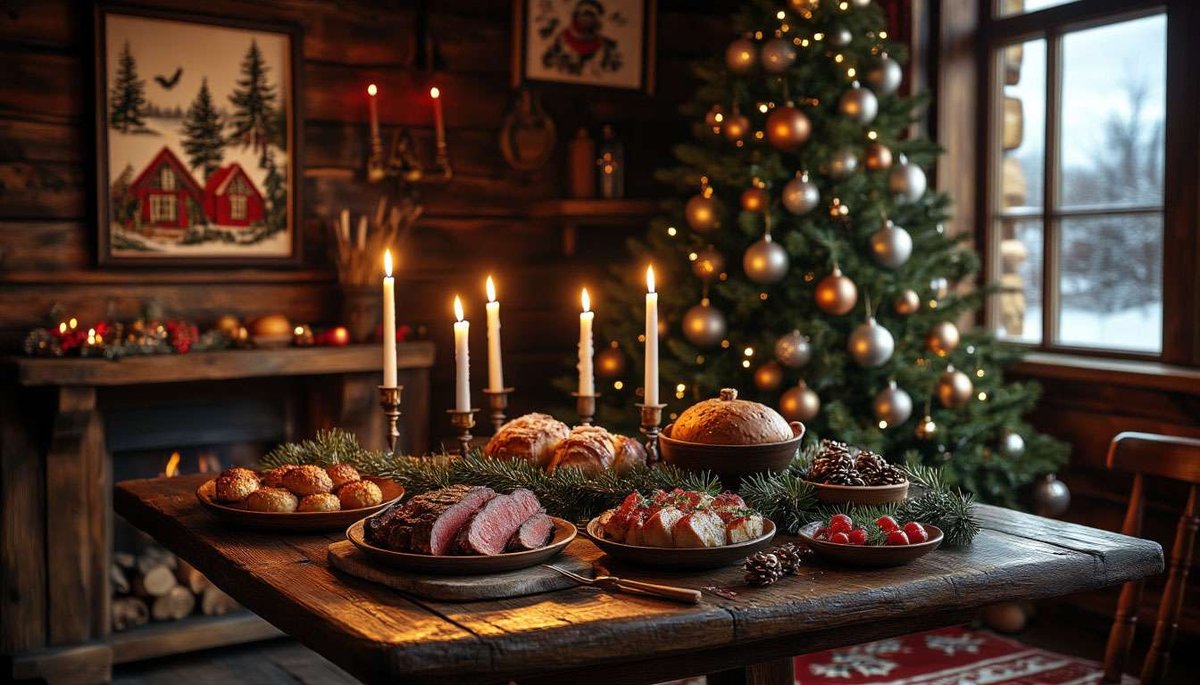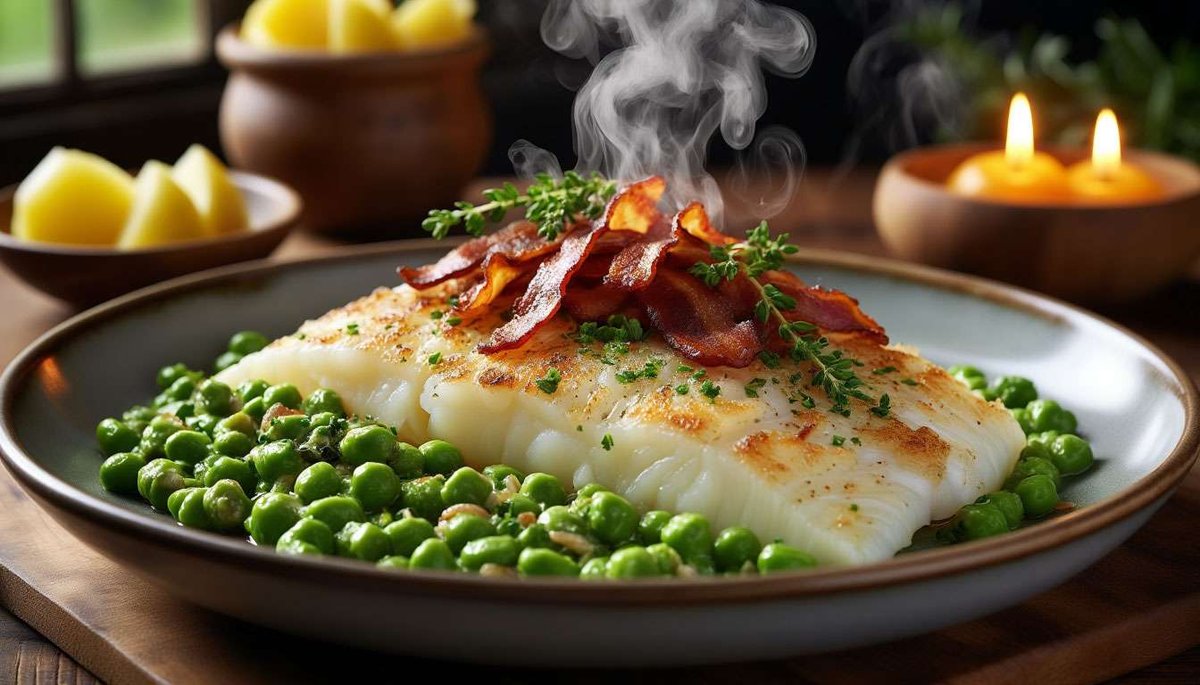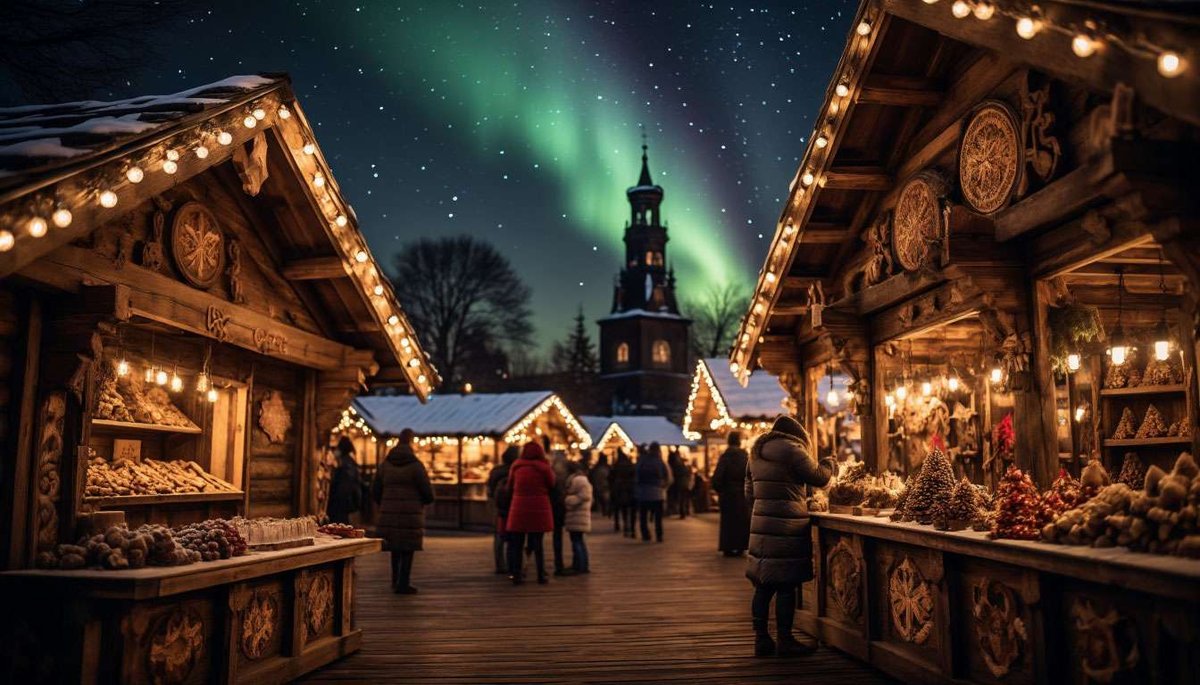Winter and Christmas in Norway: lutefisk, pinnekjøtt and the cosiness of the polar night

The polar night is gathering, the fjords are falling silent, and the whole country is waiting for Christmas. During this dark season, the kitchen becomes the main source of light and warmth: empty pastures are turned into smokehouses for lamb, dried cod comes to life in lutefisk, and every house smells of cinnamon, oranges and pine-scented gløgg. Let's take a look at the dishes that define the taste of Norwegian winter and how travellers can enjoy them in a northern fairy-tale atmosphere.
What dishes make up a classic Norwegian Christmas menu?
On the west coast, pinnekjøtt is the most popular dish — salted lamb ribs steamed on birch sticks and served with turnip purée. In the eastern and southern regions, ribbe reigns supreme — pork ribs with a crispy crust, accompanied by medister sausages and surkål cabbage. In both versions, the table is complemented by potatoes, lingonberry jam and a thick sauce made from the meat juices. The common denominator is slow cooking and high fat content, which helps to survive the cold and creates a "food fireplace" effect in the body.
Why is lutefisk still the main gastronomic symbol of Christmas?
Lutefisk is dried cod soaked in lye and then boiled until it becomes jelly-like. The tradition dates back to medieval monastery fasts, when fish was prepared in advance and lye was used to quickly soften the tough meat. Today, the dish is prepared only once a year as a family ritual: the fish is soaked for three days, changing the water, then served with potatoes, bacon and pea purée. For Norwegians, it is the taste of their ancestral roots, and for tourists, it is a test of courage and a chance to understand the country's culinary history from the inside.

What are juleøl and gløgg, and how do they differ from regular beer and mulled wine?
Juleøl is a Christmas dark beer with an alcohol content of 5–7%, brewed with caramel malts and notes of pine needles, spices and dried fruit. It is traditionally released in November, and the labels are collected like postcards. Gløgg is a northern relative of mulled wine: red wine or juice infused with cardamom, ginger, cinnamon and orange. Raisins and almonds are added to the drink, which is served in small mugs. The combination of juleøl and gløgg kicks off almost every home party during Advent, creating the sweet and spicy aroma associated with Norwegian winter.
Which sweets are considered essential in the "seven types of Christmas cookies"?
Tradition dictates that seven types of cookies be baked for Yule. The most common are krumkaker (thin waffle tubes), sandkaker (almond tartlets), pepperkaker (gingerbread cookies), berlinerkranser (cookie wreaths), goro (cardamom cookies), fattigmann (fried diamond-shaped cookies) and smultringer (donuts). The number symbolises abundance and hospitality: the hostess demonstrates her skills by treating her guests to different flavours. Tourists can try the "seven" at Christmas markets in Bergen and Trondheim or order them at Baker Hansen in Oslo, where boxes of assorted cookies are sold before the holiday.
How do the polar night and the northern lights affect winter dining experiences?
From November to January, the sun does not rise above the Arctic Circle, and the cities are shrouded in a bluish twilight. At this time, hot food and drinks become especially valuable: a cup of gløgg under the flashes of the northern lights becomes the highlight of the day. Restaurants in Tromsø and Alta offer an "Arctic tasting menu", where warm lutefisk, baked reindeer and riskrem (rice pudding) contrast with the icy landscape outside the window. This is slow food: the food warms not only the body but also the sense of time, which slows down under the stars.
Which Christmas markets are worth visiting and what should you try there?
In Oslo, the Jul i Vinterland fair on Spikersuppa Square is famous for its gløgg bars and smoked salmon sandwiches. Bergen dispels the darkness with a carousel of lights at Festplassen and treats visitors to cinnamon skillingsboller and juleøl from the local Bryggeri 7Fjell brewery. In Trondheim, the Torvet fair offers tastings of farmhouse cheeses and grilled venison. Every square has a queue for pinnekjøtt wraps — lamb in flatbread with lingonberries, perfect for eating on the go between stalls. Book your accommodation in advance: winter tourism is growing due to the popularity of the Northern Lights.

Winter in Norway is a time when the darkness outside enhances the taste of every sip and bite. One evening with a plate of lutefisk, a warm mug of gløgg and the whisper of the Northern Lights above your head can change your perception of the cold: it becomes a reason to get together and share the warmth of the kitchen. Come in December–February to stroll through the markets, listen to the snow crunching under your boots and discover that true Norwegian hygge doesn't begin by the fireplace, but at the table, where the aroma of spices wafts through the air and candles are reflected in the amber foam of juleøl.





2 comments
Log in to leave a comment